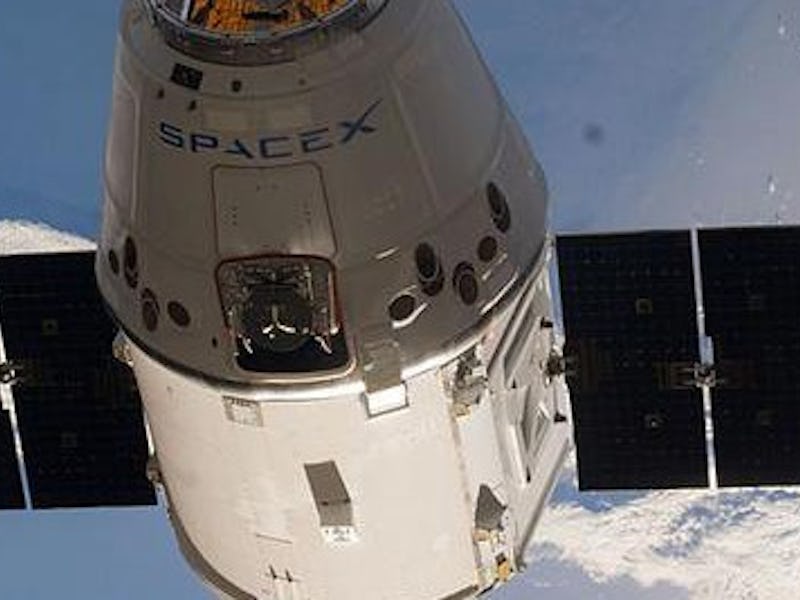Elon Musk Shares Incredible Images of SpaceX Dragon Passing by the Moon

The Dragon capsule is floating in space, attached to the International Space Station as part of its month-long stay. On Wednesday, SpaceX shared an incredible image of the laboratory and capsule passing between the company’s headquarters and the moon, capturing its peaceful journey ahead of its return to Earth on Friday.
The capsule, designed to ferry cargo and people between space and Earth, has cemented its place in history through its voyages to the space station. Its latest launch saw the capsule lift off on board a Falcon 9 from the Cape Canaveral Air Force Station at 5:42 a.m. Eastern time on June 29, reaching the station on July 2 with 5,946 pounds of cargo for aiding 27 scientific experiments. The capsule brought CIMON, short for Crew Interactive Mobile Companion, a new A.I.-powered robotic assistant that will keep the scientists company. The cargo also brought fresh crab, Death Wish Coffee, and an iPad Air.
It was the last launch of a “Block 4” rocket, after which SpaceX started phasing out the rocket in favor of the “Block 5.” The highly-reusable design was described by Hans Koenigsmann, vice president of build and flight reliability at SpaceX, as one that “basically summarizes all that we learned on reusability.” Improvements like new heat shields will increase durability, working toward the goal of using each Falcon 9 10 times with inspections between launches, and 100 times with refurbishments.
The capsule made history in 2012 when it became the first commercial spacecraft ever to deliver cargo to the International Space Station and back again. The firm designed the capsule with a total supported payload mass of 13,228 pounds and volume of 883 cubic feet, returning 6,614 pounds in 388 cubic feet. While it’s seen a lot of action as a cargo transporter, SpaceX has designed a crew configuration with futuristic internal dashboards and spacesuits.
SpaceX is set to demonstrate the crew Dragon on an uncrewed test flight from the Kennedy Space Center in the third quarter of this year, where it will trail a blaze into the future like its cargo-based predecessors.